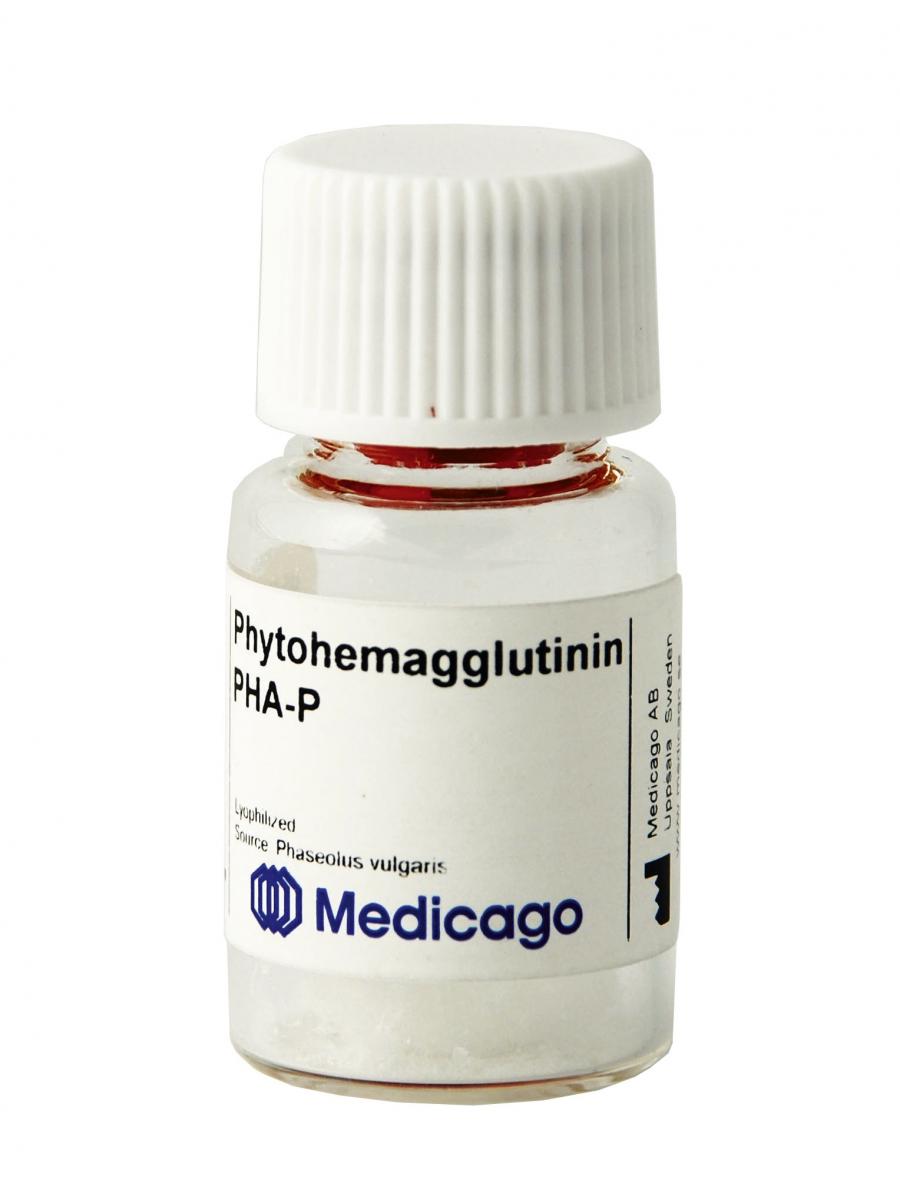Absolute Lectins
Phaseolus vulgaris lectin P (PHA-P), E-subunit enhanced
** For Pack Size 10 g or more, please contact us to inquire about pricing
Features
- Ultrapure quality
- Agglutinates leucocytes and erythrocytes
- Mixture of L and E subunits
- Sugar specificity: complex oligosaccharides
- Lyophilized powder
Product description
Phaseolus vulgaris lectin P or Phytohemagglutinin (PHA-P) is isolated from red kidney beans and purified by affinity chromatography. The lectin consists of the two subunits lectins PHA-E (erythroagglutinin) and PHA-L (leucoagglutinin) (1) thus PHA-P is the form of PHA before separation of erythroagglutinin and leucoagglutinin. PHA-P has a molecular weight of 115 kDa and specificity for complex oligosaccharides (1). PHA-P is not blood group specific.
Medicago’s PHA-P lectin is supplied as a white to light pink lyophilized powder from a buffer containing 50 mM NH4HCO3. The purity of the lectin is determined by SDS-PAGE generating one single band at ???. PHA-P is available in vials containing 10 mg or 5 mg lyophilized powder and the product is to be used for laboratory work only.
Applications
- Lateral flow erythrocyte separation
Directions for use
The lectin may be reconstituted with 2 ml of deionized water before use. Spin the vial gently until full dissolution. Aggregation is thought to occur in the presence of high concentrations of 2-mercaptoethanol. The solution may be reconstituted in this buffer to desired working concentration.
Shipping and storage
The product is shipped at -20°C however for over-the-day transport it may be shipped at ambient temperature. The lyophilized powder is stable for more than three years from production date when stored below -20°C. After reconstitution with deionized water, the solution may be stored frozen in working aliquots for up to 12 months.
References
(1) Liener I. E., Sharon N., Goldstein I. J., (1986) The Lectins – Properties, Functions and Applications in Biology and Medicine.

